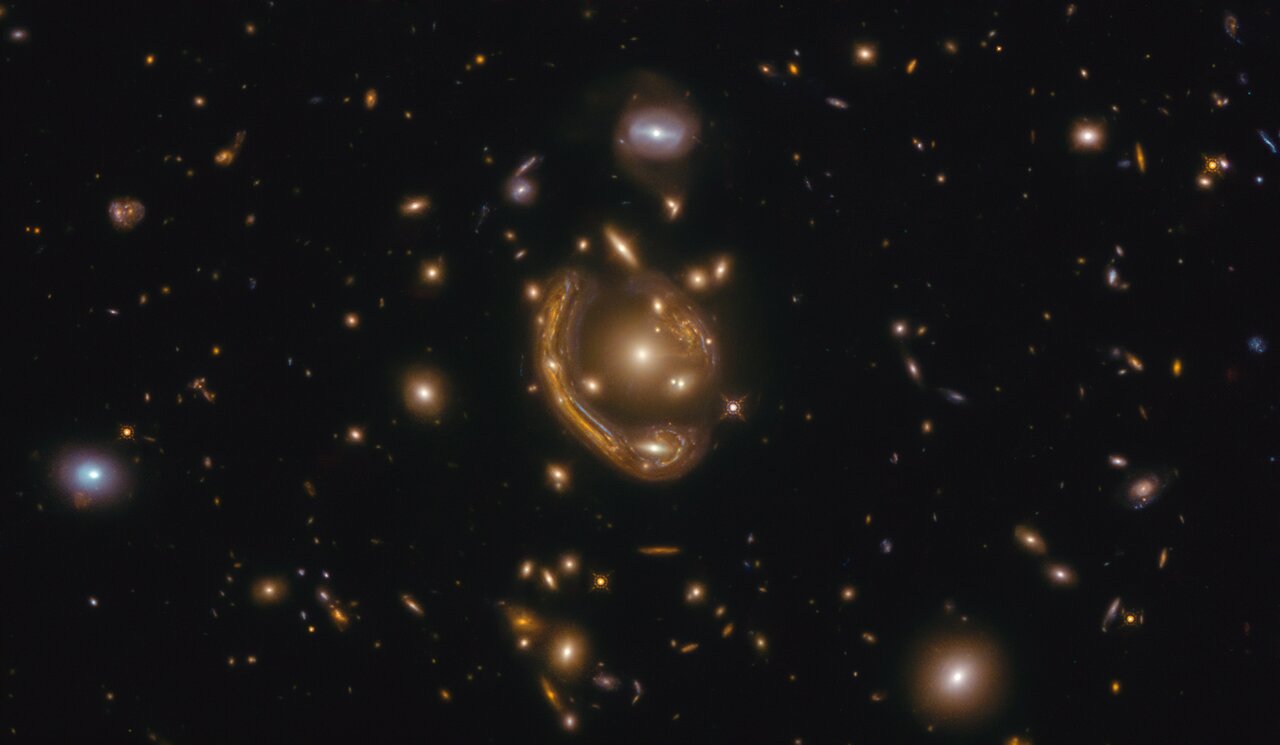
Weak lensing is a cosmic phenomenon that bends light from distant galaxies due to massive objects like galaxy clusters. This bending creates subtle distortions in the images of these galaxies, which scientists use to map dark matter and understand the universe's structure. Weak lensing is different from strong lensing, which creates more noticeable effects like arcs and multiple images. By studying these slight distortions, astronomers can gain insights into the distribution of dark matter, the expansion of the universe, and the nature of gravity. Ready to dive into 28 intriguing facts about weak lensing? Let's get started!
What is Weak Lensing?
Weak lensing is a fascinating phenomenon in astrophysics. It involves the bending of light from distant galaxies due to the gravitational influence of massive objects like galaxy clusters. This subtle effect helps scientists understand the distribution of dark matter and the structure of the universe.
-
Weak lensing occurs when light from distant galaxies is slightly bent by the gravitational field of massive objects.
-
Unlike strong lensing, weak lensing does not produce multiple images or dramatic arcs.
-
The effect is so subtle that it requires statistical analysis of many galaxies to detect.
-
Weak lensing helps map the distribution of dark matter, which does not emit light and is invisible to telescopes.
How Weak Lensing is Detected
Detecting weak lensing involves sophisticated techniques and equipment. Scientists use large telescopes and advanced algorithms to measure tiny distortions in the shapes of distant galaxies.
-
Astronomers use large surveys of the sky to collect data on millions of galaxies.
-
Advanced computer algorithms analyze the shapes of these galaxies to detect slight distortions.
-
The distortions are then used to create maps of dark matter distribution.
-
Space telescopes like the Hubble Space Telescope have been crucial in weak lensing studies.
Importance of Weak Lensing in Cosmology
Weak lensing provides valuable insights into the universe's structure and composition. It helps scientists test theories of gravity and understand the mysterious dark energy driving the universe's accelerated expansion.
-
Weak lensing data helps test and refine models of the universe's structure.
-
It provides evidence for the existence and distribution of dark matter.
-
Weak lensing studies contribute to understanding dark energy, a force causing the universe to expand faster.
-
The technique helps verify predictions made by Einstein's theory of general relativity.
Challenges in Weak Lensing Research
Despite its importance, weak lensing research faces several challenges. These include the need for precise measurements, dealing with noise in data, and the requirement for large datasets.
-
Accurate shape measurement of galaxies is crucial but challenging due to atmospheric distortions.
-
Noise in the data can obscure the weak lensing signal, requiring sophisticated filtering techniques.
-
Large datasets are needed to detect the subtle effects of weak lensing.
-
Calibration of instruments and algorithms is essential to ensure accurate results.
Recent Discoveries and Advances
Recent advances in technology and methodology have led to significant discoveries in weak lensing. These include more detailed maps of dark matter and improved understanding of cosmic structures.
-
The Dark Energy Survey has provided some of the most detailed maps of dark matter using weak lensing.
-
New algorithms have improved the accuracy of weak lensing measurements.
-
Advances in computer simulations help scientists better understand weak lensing effects.
-
Upcoming missions like the Euclid satellite aim to further enhance weak lensing research.
Future Prospects of Weak Lensing
The future of weak lensing research looks promising with upcoming missions and technological advancements. These will provide even more detailed insights into the universe's structure and composition.
-
The Euclid satellite, set to launch soon, will map the geometry of the dark universe using weak lensing.
-
The Vera C. Rubin Observatory will conduct a 10-year survey, providing unprecedented weak lensing data.
-
Improved computational power will allow for more detailed simulations and analyses.
-
Collaboration between international research teams will enhance the quality and scope of weak lensing studies.
Fun Facts About Weak Lensing
Weak lensing isn't just for scientists; it has some fun and surprising aspects that can captivate anyone interested in the cosmos.
-
Weak lensing can create subtle, beautiful patterns in the sky, often referred to as "cosmic shear."
-
The study of weak lensing has inspired new techniques in image processing and data analysis.
-
Even amateur astronomers can contribute to weak lensing research through citizen science projects.
-
Weak lensing helps us "see" the invisible parts of the universe, making it a powerful tool in modern astrophysics.
The Final Snapshot
Weak lensing, though subtle, offers a powerful lens into our universe's mysteries. By observing how light bends around massive objects, scientists can map dark matter, understand galaxy formation, and even test Einstein's theories. This cosmic detective work helps us grasp the unseen forces shaping the cosmos.
From the cosmic web to the intricate dance of galaxies, weak lensing provides invaluable insights. It’s a testament to human curiosity and ingenuity, pushing the boundaries of what we know. As technology advances, our understanding of weak lensing will only deepen, revealing more about the universe's hidden structures.
So next time you gaze at the night sky, remember the invisible threads weaving the cosmic tapestry. Weak lensing is a reminder that even the faintest signals can unlock profound secrets. Keep looking up; the universe has many more stories to tell.
Was this page helpful?
Our commitment to delivering trustworthy and engaging content is at the heart of what we do. Each fact on our site is contributed by real users like you, bringing a wealth of diverse insights and information. To ensure the highest standards of accuracy and reliability, our dedicated editors meticulously review each submission. This process guarantees that the facts we share are not only fascinating but also credible. Trust in our commitment to quality and authenticity as you explore and learn with us.
